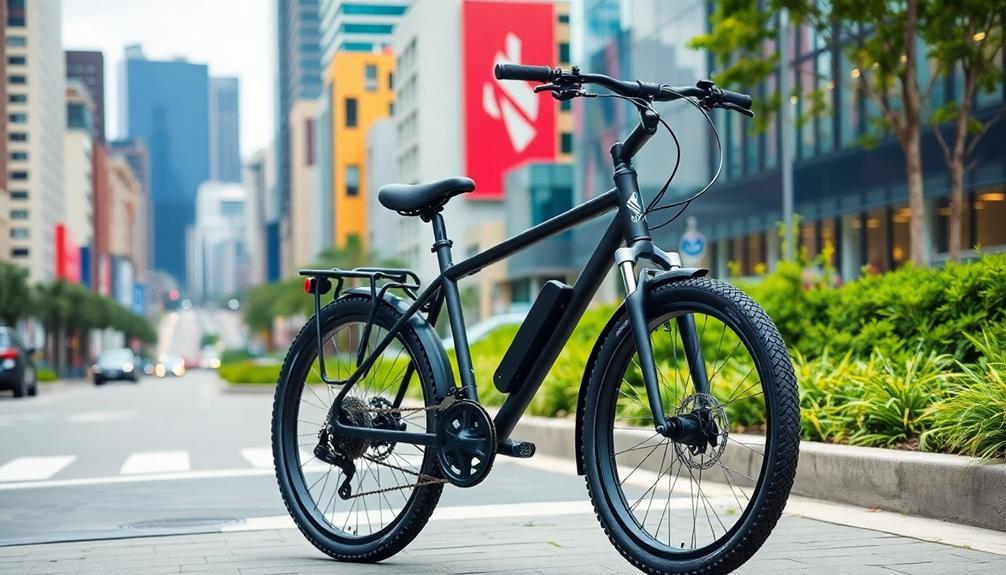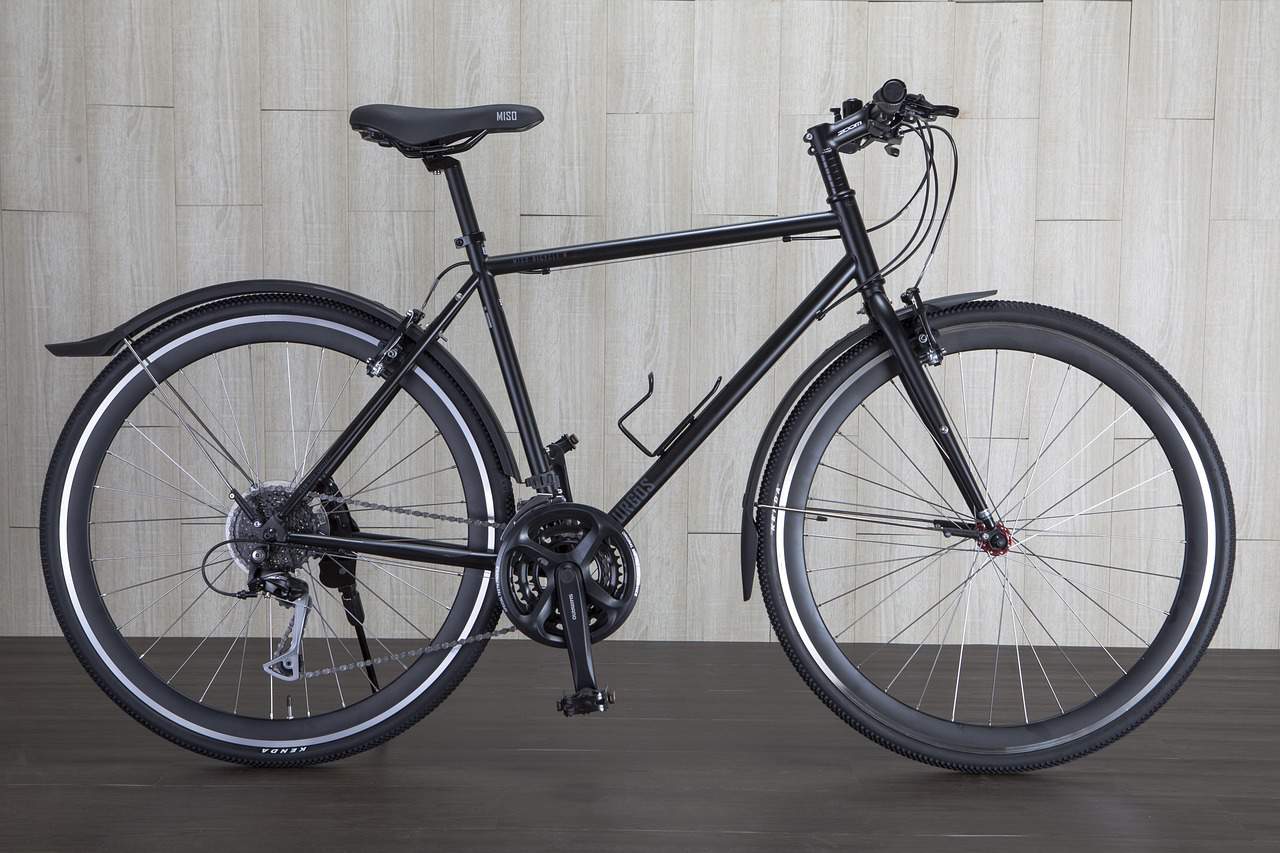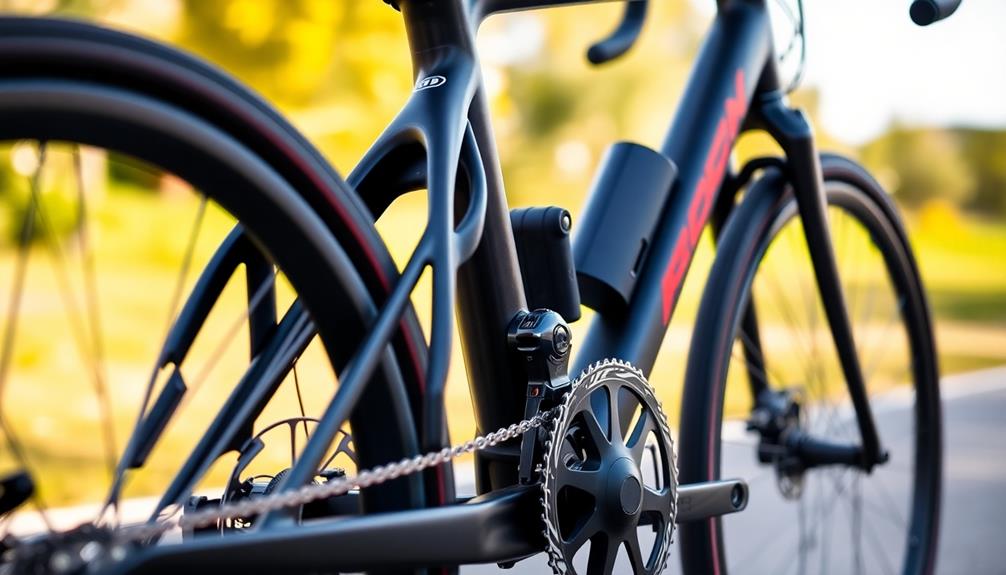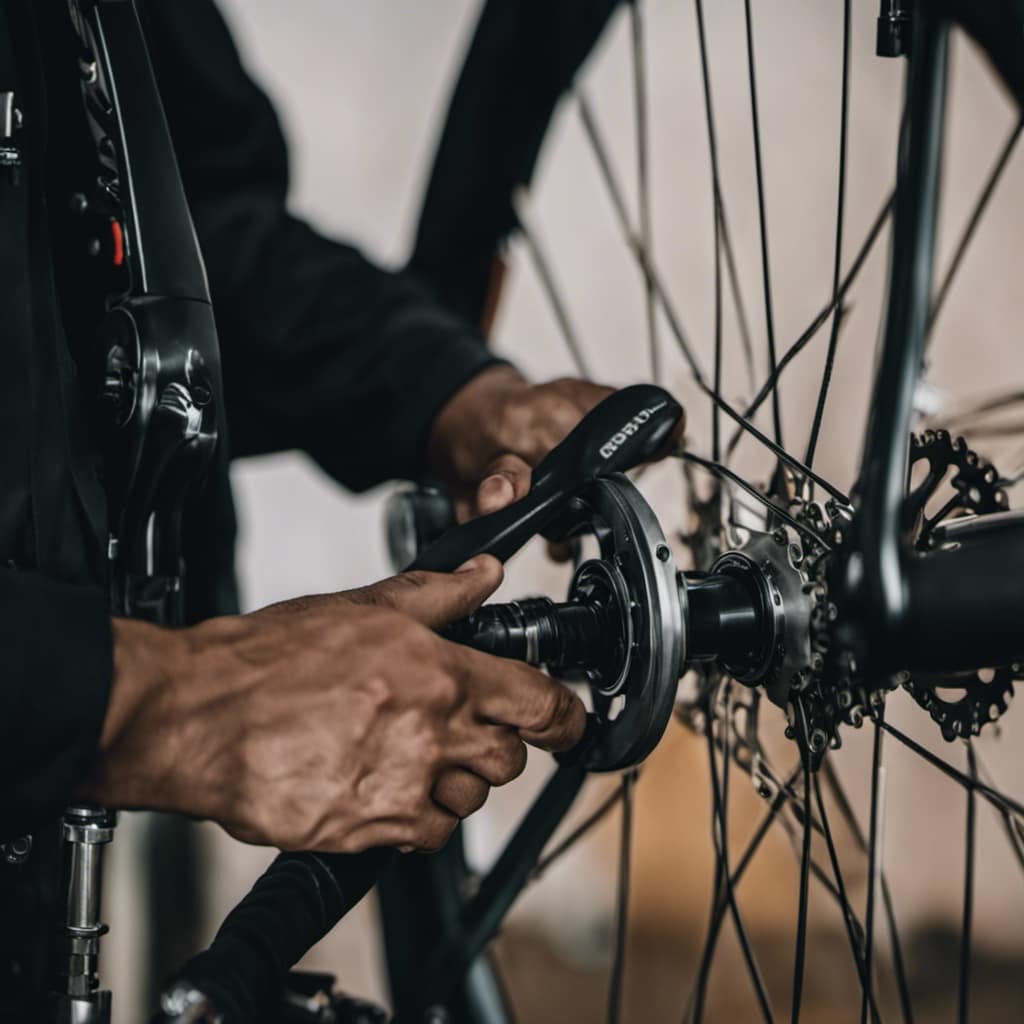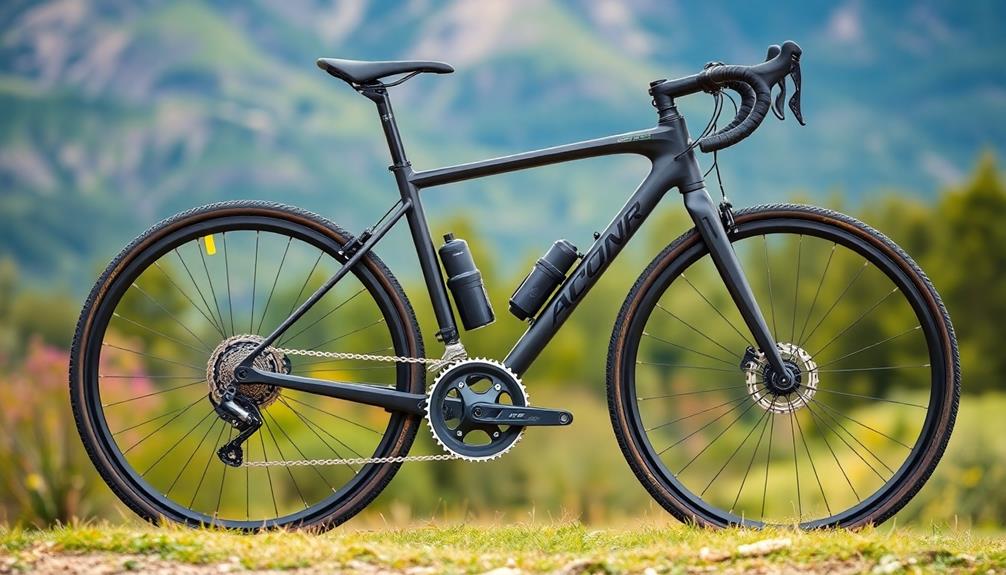When you're choosing a hybrid bike for urban commuting, focus on key features that matter. Look for a lightweight aluminum or steel frame for comfort and durability. Prioritize hydraulic disc brakes for superior stopping power and safety in all weather. The right wheel size, like 700c for speed or 26-inch for maneuverability, can greatly improve your ride. Don't overlook gear options; multi-speed systems offer versatility for varied terrains. Accessories like mudguards, integrated lights, and a reliable bike lock enhance your overall experience and convenience. Explore these aspects to find the perfect ride for your daily commute.
Key Takeaways
- Choose an aluminum frame for lightweight durability or steel for comfort over rough terrain when selecting a hybrid bike for urban commuting.
- Opt for hydraulic disc brakes for superior stopping power and minimal maintenance, enhancing safety during daily rides in various weather conditions.
- Select 700c wheels for speed on paved surfaces or 26-inch wheels for better maneuverability in tight urban spaces, balancing speed and control.
- Consider a multi-speed gearing system for adaptability on hilly terrains, or a single-speed option for simplicity on flat routes.
- Essential accessories like mudguards, integrated lights, and bike locks enhance comfort, safety, and security during urban commuting.
Key Features of Hybrid Bikes
When traversing city streets, you'll appreciate the key features of hybrid bikes that make urban commuting a breeze. A hybrid bike typically comes with flat handlebars, offering better control and stability as you navigate through traffic. This design helps you maintain a comfortable ride, especially when you're weaving in and out of lanes.
Additionally, hybrid bikes are known for their versatility, making them suitable for various terrains, from roads to light trails, which enhances your commuting experience even further versatility of hybrid bikes.
One of the standout features is the disc brakes, which provide superior stopping power, ensuring you can halt quickly and safely in various weather conditions. You won't have to worry about reliability, even in the rain.
Additionally, the wide range of gearing options—from 1×8 to 3×8-speed systems—allows you to tackle different terrains and inclines with ease, making your commute more efficient.
Most hybrid bikes boast a lightweight aluminum frame, enhancing portability and ease of handling on city streets. Plus, many models come with integrated mounts for racks and fenders, increasing their utility.
Whether you're carrying groceries or need protection against splashes during wet weather, these features make hybrid bikes a practical choice for urban commuting. With these enhancements, your rides will be smoother and more enjoyable.
Choosing the Right Wheel Size
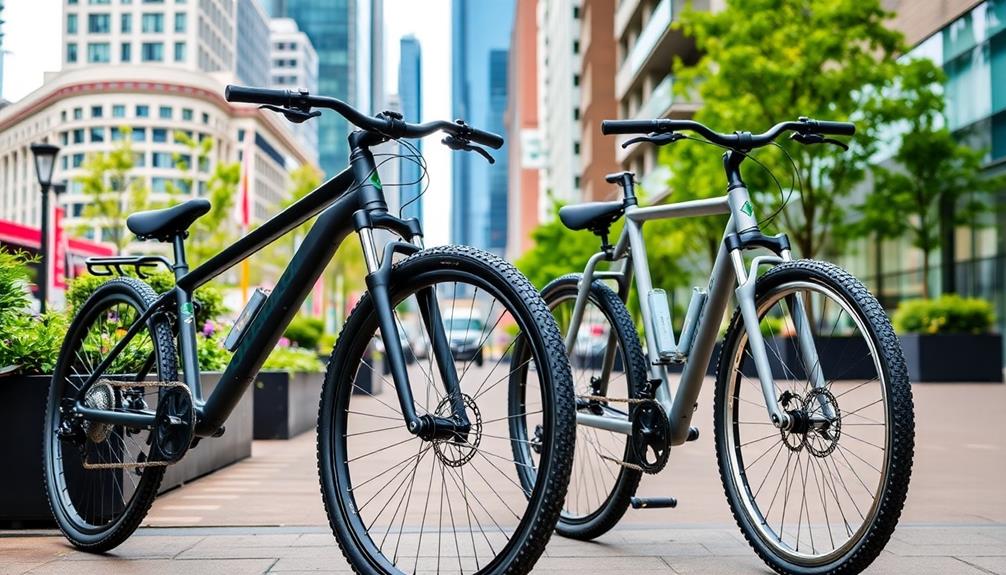
When you're choosing a hybrid bike, wheel size plays a vital role in your ride experience. Larger 700c wheels boost your speed and efficiency on smooth roads, while smaller 26-inch wheels enhance your maneuverability in tight spaces.
Additionally, consider how the right projector type can similarly impact your viewing experience based on your environment. Think about your typical commuting environment to find the right balance between speed and control.
Impact on Speed
Choosing the right wheel size can greatly impact your speed and overall commuting experience on a hybrid bike. Most hybrid bikes come equipped with 700c wheels, which offer superior speed and efficiency on smooth, paved paths typical of urban commuting.
These large wheels, often featuring 28-32mm tires, provide excellent stability and comfort, allowing you to glide effortlessly over flat surfaces. Additionally, similar to how utilizing efficient heating methods can enhance your eco-friendly lifestyle, selecting the right wheel size can optimize your biking experience and reduce energy expenditure during commutes eco-friendly practices.
However, if you're maneuvering through crowded areas or varied terrain, you might consider smaller wheels, like 26 inches. While they may not roll as fast as larger wheels, they enhance acceleration and give you better control in tight spaces.
This can be vital when dodging pedestrians or making quick turns.
Maneuverability Considerations
Maneuverability plays an essential role in your urban commuting experience, especially when considering wheel size. The right choice can greatly impact how well you navigate crowded streets and obstacles. Here are some key factors to think about:
1. 700c Wheels: Ideal for speed and efficiency on paved surfaces, these larger wheels provide momentum and stability, making them great for long commutes on smooth roads.
Additionally, energy efficiency ratings can be considered when selecting a bike that complements your commuting needs.
2. 26-Inch Wheels: If you often encounter rough terrain or need to make tight turns, these smaller wheels enhance maneuverability. They allow for easier navigation in busy urban environments.
3. Wide Tires: Whether you choose 700c or 26-inch wheels, opting for tires in the 28mm to 32mm range can improve grip and control. This combination offers a comfortable ride while maintaining stability during quick direction changes.
Your choice of wheel size should align with your commuting style. If you prioritize speed, go for 700c wheels.
However, if you often find yourself weaving through traffic or tackling uneven surfaces, 26-inch wheels might be your best bet.
Understanding Gear Options
When it comes to gear options on hybrid bikes, understanding gear ratios is essential for your urban commute.
For instance, if you're maneuvering hilly terrains or varying landscapes, having a multi-speed setup can greatly enhance your riding experience.
You'll find yourself choosing between single-speed and multi-speed setups, each with its own benefits.
Knowing how these options impact your ride can help you tackle various terrains more effectively, similar to how mastering the art of bug out bags guarantees preparedness in diverse situations mastering the art of bug out bags.
Gear Ratios Explained
Understanding gear ratios is essential for making the most of your hybrid bike's performance, especially in urban environments where terrain can vary considerably.
The right gearing can enhance your riding experience, whether you're tackling hills or cruising on flat roads. Additionally, much like how heat pumps can reduce energy consumption, selecting the right gear ratio can optimize your energy expenditure while riding.
Here are three significant aspects of gear ratios to keep in mind:
- Gearing Range: Hybrid bikes typically offer a gearing range from single-speed options to multi-speed systems with up to 27 gears. This flexibility helps you handle different inclines and conditions effortlessly.
- Common Setups: Most hybrid bikes feature two front chainrings paired with 9-11 rear cogs. This combination strikes a balance between ease of use and versatility, essential for urban commuting.
- 3×8-Speed Advantage: Systems like the 3×8-speed found on models such as the Co-op Cycles CTY 1.1 allow for efficient cadence management.
This is vital for maintaining performance, especially in hilly areas where a 32-tooth sprocket can enhance your climbing ability.
Single vs. Multi-Speed
Choosing between a single-speed and a multi-speed hybrid bike can greatly impact your commuting experience. Single-speed hybrid bikes are perfect for flat terrains and casual rides, offering simplicity and low maintenance.
They're lightweight and easy to operate, which makes them well-suited for urban environments where quick stops and starts are common. For peak performance, just as with best low calorie dog foods designed for overall health, selecting a bike that meets your commuting needs is essential.
However, if your route involves hills or varied terrains, you might want to reflect on multi-speed bikes.
Multi-speed bikes come with versatile gearing systems, ranging from 3×7 to 1×11 speeds, allowing you to adjust your cadence and power output based on the commuting conditions.
With a wider gearing range, like the 12-32 found in Co-op Cycles CTY 1.1, you'll experience improved performance on mixed surfaces, making climbing easier and more efficient.
This adaptability enhances rider comfort, enabling peak gear selection to tackle any terrain.
Importance of Brake Systems
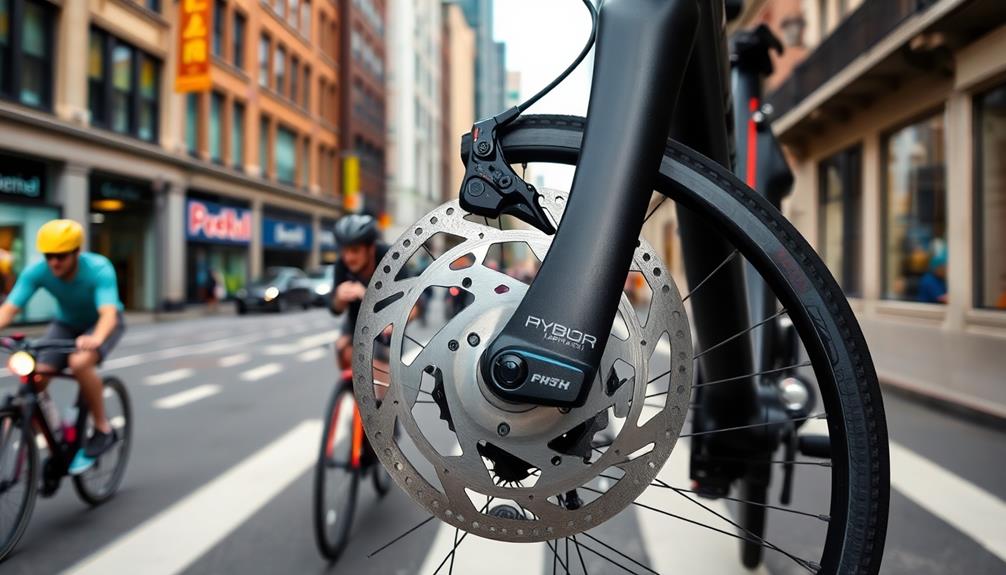
Brake systems are vital for your safety and confidence while commuting on a hybrid bike in urban environments. The right braking system can make all the difference, especially when you need to stop quickly in busy traffic or wet conditions.
Regular maintenance of your bike, including the brake system, is essential to guarantee peak performance and safety. Here are three key features to take into account:
- Hydraulic Disc Brakes: These provide superior stopping power and modulation, ensuring you have reliable control in all weather conditions. Their minimal maintenance needs make them ideal for daily use.
- Mechanical Disc Brakes: While slightly less powerful, they offer great reliability and easier maintenance compared to rim brakes. They're a solid choice if you prefer a more accessible option that still performs well.
- Accessibility for All Fitness Levels: Disc brakes require less hand strength to operate, making them suitable for riders of various fitness levels. This enhances safety, as you can brake effectively without straining.
In urban commuting, a well-maintained braking system is essential. Prioritizing reliable brakes not only increases your safety but also boosts your confidence as you navigate the bustling city streets.
When choosing your hybrid bike, take into account the braking system that best suits your needs. Regular cleaning is essential for maintaining peak performance.
Frame Materials and Comfort
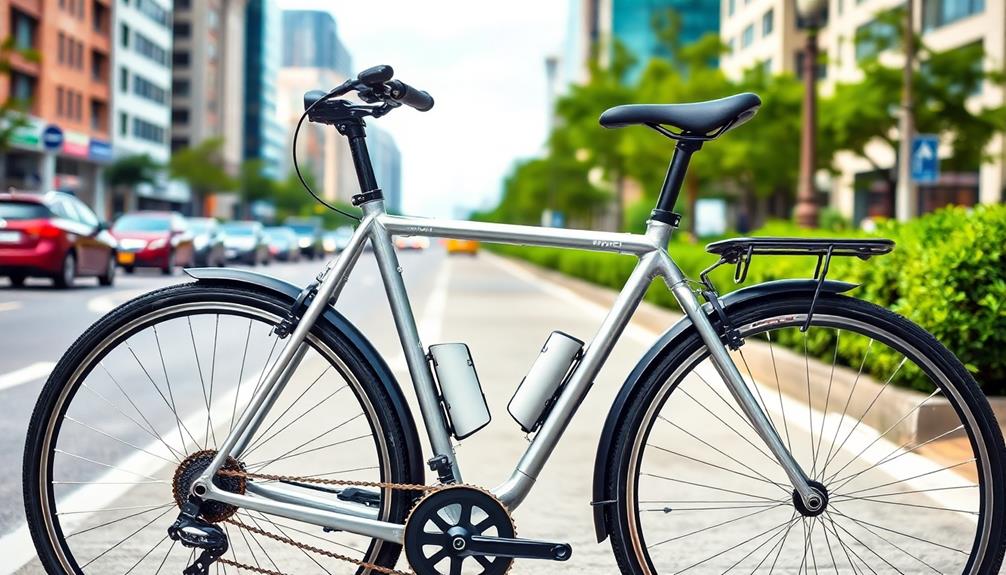
When traversing the urban landscape on a hybrid bike, the frame material plays an essential role in your overall comfort and ride quality. An aluminum frame is a popular choice due to its lightweight and durability, making it ideal for urban commuting where maneuverability is key.
However, if you're tackling rough city streets, a steel frame may be more appealing. Though heavier, it offers superior vibration dampening, ensuring a comfortable ride over bumpy paths. Additionally, investing in a bike that suits your needs can be viewed as a long-term strategy for financial health, as it may reduce transportation costs over time financial planning insights.
For those seeking a high-end option, a carbon frame provides an excellent balance of lightweight strength and enhanced ride quality, perfect for long-distance commutes.
Many hybrid bikes also feature relaxed geometry and an upright riding position, further promoting comfort and visibility in urban traffic. This design is vital for both safety and ease during your daily rides.
Ultimately, the choice of frame material can greatly impact your experience. Aluminum offers a budget-friendly balance of performance, while carbon frames deliver advanced comfort features for more serious cyclists.
Consider your commuting needs and preferences to find the perfect frame that meets your comfort requirements.
Additional Accessories for Commuting

To enhance your urban commuting experience, equipping your hybrid bike with the right accessories is vital. The right gear not only boosts your bike's performance but also guarantees safety and convenience during your rides.
Additionally, considering the principles of Leave No Trace can help you make environmentally conscious choices while commuting. Here are three must-have accessories for your hybrid bike:
- Mudguards: These protect you from splashes and keep your clothes clean, especially in wet conditions. Many hybrid models come pre-fitted with them for your convenience.
- Bike Racks: Perfect for carrying cargo, bike racks let you easily transport bags or groceries. Most hybrid bikes have eyelets that make installation simple and quick.
- Integrated Lights: Visibility is essential for safety, especially during low-light conditions. Models like the Priority Continuum Onyx feature dynamo-powered lights, eliminating the hassle of battery replacements.
Don't forget about bike locks to prevent theft; a durable option like the Kryptonite Evolution Mini-7 is highly recommended.
Additionally, consider installing a bike computer to track your distance, time, and speed, helping you monitor your performance.
With these accessories, you'll be well-prepared for any urban commuting challenge!
Frequently Asked Questions
Are Hybrid Bikes Good for City?
Hybrid bikes are great for city riding. They offer stability, comfort, and excellent visibility, making it easier for you to navigate traffic. Plus, they handle rough surfaces well, ensuring a smooth commute every time.
What Features Should I Look for in a Hybrid Bike?
When choosing a hybrid bike, look for a comfortable upright position, wide tires for stability, disc brakes for safety, practical fender mounts, and a versatile gearing system to tackle different terrains efficiently.
What Are the Disadvantages of Hybrid Bikes?
Hybrid bikes might not give you the speed you crave, the agility you need, or the specialized performance you want. They can feel heavier, less aerodynamic, and less efficient than their road or mountain counterparts.
What Is a City Hybrid Bike?
A city hybrid bike's a versatile ride, combining road and mountain bike features. It offers comfort, stability, and practicality for urban adventures, with options for wider tires and various gearing systems to suit your needs.
Conclusion
In summary, picking the perfect hybrid bike for urban commuting means prioritizing features that fit your needs. From wheel size to gear options, each element enhances your experience. Focus on finding a frame that feels comfortable and sturdy, while reliable brakes guarantee safety during city travels. Don't forget to reflect on accessories that add convenience to your ride. Embrace the joy of joyful journeys as you navigate the bustling streets with comfort and confidence!
